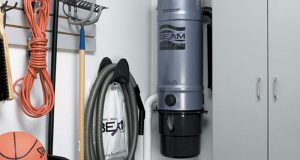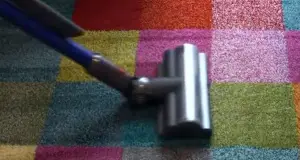Everything You Should Know About: How Does Vacuum Filtration Work?
No matter if you are using a canister, upright, or bagless, your vacuum always has a filter system. Are you wondering how does vacuum filtration work? How can vacuum cleaners suck the air and dirt in a specific place? Well, we are going to answer it all in this article.
How does Vacuum Cleaner Filtration work?
Filtering is a simple concept to grasp, and most of us are familiar with how it works. It’s easiest to describe when placed in the context of air filtering, as this may be seen in our topic of choice: the vacuum cleaner.
Vacuum filtration works by using pressure to force air out of the filter media, creating a vacuum. The vacuum pulls water molecules through the pores in the filter media and removes them from your liquid. Vacuum filters are often used to filter fuel because they can remove water quickly without contamination or corrosion occurring on metal parts like other filters.
You should also know that filters are manufactured with several tiny holes in a cloth, soft plastic, or a paper surface. It allows the air to push through and prevent the dust from passing. When the dirty air passes through the filter, the dirt is captured by the vacuum, and it only allows the clean air to pass.
To understand your vacuum filter, you should know in-depth details about the filtration process and standards. Furthermore, also learn about how filtration is applied to your vacuum cleaner and keep it working for years to come.
What are the different types of Vacuum Filters?
It is important to know the types of vacuum filters. That way, you can understand the working of vacuum cleaners quite easily. You should know that all vacuums are not designed equally. They come with different types of filtering systems.
1- Bagless Vacuums
These vacuum filters mostly come with 2 or more filters. They have a pre-motor filter and an after-motor filter. The main job of the pre-filter is to remove dust particles from your floor or carpet before they get into your motor. It helps in prolonging the life of vacuum motors by keeping out dirt, debris, and hair.
2- Bagged Vacuums
These vacuum cleaners have a filter bag that traps dirt and particles as you sweep floors. It is made of cloth or paper with several tiny holes to allow airflow. Besides that, it only allows tiny particles to escape. This allows your motor to remain free from dust, debris, dander, allergens, pollen, etc.
3- Canister Vacuum Filters
Canisters use bagged filtration systems because it’s hard for them to clean their filters regularly mechanically. They ensure that all air passes through the HEPA (High-Efficiency Particulate Air) bags first since these are allergy-friendly vacuums with great suction power.
4- Upright Vacuum Filters
The Upright filters come with canister-style filtering systems. They have mostly bagged vacuum cleaners because it’s easier for them to keep the dust out of their components than canisters that have both filtration systems outside and inside its body. An extra air filter also ensures that dirt doesn’t get blown back into your room when you’re vacuuming.
How to Clean and Maintain your Vacuum Filter?
Vacuum filters play an important role in keeping both allergens and bacteria away from us, so make sure you keep them always clean.
Here are the steps that you should follow for vacuum filtration:
1- Clean it thoroughly
First of all, clean your filter. There is a simple way to do it – by using water and mild soap. Never use any solvents or cleaners as they damage the media’s ability to hold dirt particles in place while trapping air molecules that create the suction pressure.
2- Dry before putting it back
After cleaning, dry it completely before putting back into the vacuum cleaner system. If there is moisture left on it, then mold can eventually grow inside your machine. It will affect its performance, eventually making your machine less effective when dealing with dust extraction. Moreover, keep the extra filter so that you don’t have to wait for the filter to dry to put back in.
3- Check for Tears and Cracks
Don’t forget to check filters for tears or cracks before putting them back into the body of the vacuum cleaner system. Inspect your vacuum filter bag often and keep an eye on the seams. If you find any tears or holes in it, switch to a new one immediately because they can affect the filtration process by letting small particles slip into the vacuum cleaner system again. Moreover, change the vacuum bags if they’re full, which can cause poor suction power.
4- Don’t use Solvents for Cleaning Filters
never use any solvents or cleaners on your machine. It damages the vacuum’s ability to hold dirt while trapping air molecules that create the pressure needed for the suction process.
5- Dry vacuuming
Cleaning should include dry vacuuming also, so make sure you remove all moisture from the surface after washing with mild soap solution using a brush attachment if necessary (for stubborn stains).
6- Know your Filter Type
Depending on the type of your filter, you’ll need more or less regular cleaning. If it’s paper, change every three months, while foam filters should be cleaned at least twice a year. Although HEPA media vacuums can go longer without needing replacement (up to two years).
7- Watch out for Reduced Suction
If you see reduced suction power, then it means that your vacuum filter is clogged. Clean filters, change bags/filters often, and contact professionals to inspect your entire machine if the problem persists.
Is it Possible to Vacuum without a Filter?
Yes, it is possible, although with a reduced suction power and the ability to pick up fine dust. Some of the bagless vacuum cleaners do not require filters. Still, they also don’t have any special features that could separate small particles from the air, like HEPA media or cyclonic technology (for canister vacuums).
Conclusion
Now that you know how does vacuum filtration work, it’s time to get yourself one. Make sure you buy the right kind of your home after exploring different types of filters and their benefits. So, if something goes wrong, you would be able to replace or clean them easily without much effort.





